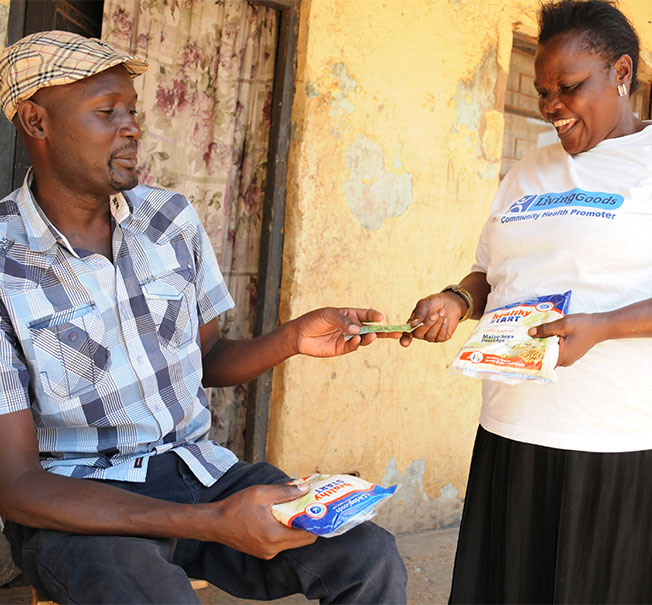AWS Startups Blog
Living Goods uses smartphone tech to bring health to rural communities one doorstep at a time
 In 2007, Chuck Slaughter launched his new social enterprise, Living Goods, in Uganda, “borrowing from the Avon playbook.” But instead of going door-to-door selling lipstick and hand creams, Living Goods’ community health workers arrive on local doorsteps offering medical services, health education, medicines, and health products.
In 2007, Chuck Slaughter launched his new social enterprise, Living Goods, in Uganda, “borrowing from the Avon playbook.” But instead of going door-to-door selling lipstick and hand creams, Living Goods’ community health workers arrive on local doorsteps offering medical services, health education, medicines, and health products.
Slaughter’s inspiration for this out-of-the-box business model came when he discovered that Avon had started operating in rural America in the late nineteenth century, when small towns were disconnected from each other, making storefront commerce difficult. Believing that the best way to learn a new business model is to study it from the inside, Slaughter ordered his starter kit and signed on as an “Avon lady.” He didn’t break any records in cosmetics sales, but he did figure out how to use the door-to-door model as the engine to power a much-needed social enterprise.
Prior to starting Living Goods, Slaughter had been an entrepreneur, interested in solving sales and distribution challenges, with a longstanding interest in travel and faraway places. While volunteering in Kenya, he saw that traditional storefront drugstores were struggling: shopkeepers were often idle for large parts of the day, and the brick-and-mortar storefront model meant that sick people who were homebound or lived in rural areas weren’t able to access the supplies they needed. As a test, he encouraged some local shop owners to step outside of their stores and meet customers where they were: in their homes and schools.
Today, Living Goods recruits and manages thousands of local community health workers who go door-to-door in low-bandwidth and rural communities, where access to the formal health-care system is limited.
The community health workers use Living Goods’ Android app, called SmartHealth, which provides workflow guidance and data collection. They host health talks and work one-on-one, earning income by selling products and earning linked incentives. To maximize their impact, they focus on key target areas: maternal and newborn health, including family planning and nutrition, and the diagnosis and treatment of malaria, pneumonia, and diarrhea. Because of their local knowledge, community health workers have the capacity to offer frontline healthcare to underserved villages. But training, supervision, and accountability are key—Living Goods aims to fill these gaps, and provide the technical support to help optimize efficiency.
Living Goods’ goals for the future are to scale up to reach twenty-four million people, expand the services offered, and to forge new partnerships. Part of this growth will involve a change in the way the enterprise uses its data. Joining AWS, Living Goods will be able to control its data internally, providing key metrics and helping improve efficiency as the enterprise continues to grow.